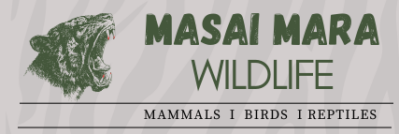- Common Names: Bush Duiker
- Scientific Name: Sylvicapra grimmia
- Swahili Name: Nsya
- Maasai Name: Empanas
- Size:
- Head-Body Length: 135 cm (53 inches)
- Shoulder Height: 50 cm (20 inches)
- Gestation: 18–23 weeks
- IUCN Status: Least Concern, although its population is stable, localized hunting and habitat loss are potential threats.
Recognition and Appearance
The Bush Duiker is a small, shy antelope, often compared to the slightly smaller Kirk’s Dik-dik. It has a distinctive black, button-like nose and a dark blaze running down the snout. Its compact body is covered in a sleek coat, varying in color from grey to reddish-brown, helping it blend into its environment. The short, black-striped tail is another distinguishing feature. Males carry short, spiked horns, while females are hornless but generally larger. These antelopes can often be confused with other small antelope species, but their behavior and distinctive markings make them identifiable.
Habits and Behavior
Bush Duikers are primarily nocturnal and highly secretive, usually spotted only at dawn or dusk. They are known for their solitary nature, though they may sometimes be seen in pairs, particularly during the breeding season. Males are territorial and often patrol their area, marking their presence by scratching trees with their small horns, leaving dung piles, and secreting scent on vegetation. They are vigilant and quick to dive into dense cover when threatened—hence the name “duiker,” derived from the Afrikaans word for “diver.”
Although shy, Bush Duikers exhibit a remarkable behavior of following groups of birds and monkeys, taking advantage of fruits dropped from above. This opportunistic feeding strategy allows them to supplement their diet of leaves, shoots, seeds, and occasionally small animals.
Where to Find
Bush Duikers prefer dense cover and can often be found in woodland, forest margins, and thickets. They are also known to venture out into open areas but remain close to cover, diving back into vegetation when they sense danger. Their wide adaptability allows them to inhabit various landscapes, from savannas to forested areas, where they browse on shrubs and low-hanging foliage.
Diet
The Bush Duiker has a browsed diet, feeding primarily on leaves, shoots, seeds, and fallen fruits. They are opportunistic feeders, occasionally adding small mammals, birds, and insects to their diet. This mixed diet provides the necessary nutrition for them to survive in varied habitats, particularly those with seasonal changes in food availability.
Conservation Status
The Bush Duiker is currently listed as Least Concern by the IUCN due to its wide distribution across Africa. While generally common, localized threats such as hunting for bushmeat, habitat destruction, and agricultural expansion can negatively impact some populations. However, due to its secretive and adaptable nature, the Bush Duiker has managed to thrive in many protected areas, including the Masai Mara.
Interesting Facts
- Name Origin: The name “duiker” is derived from the Afrikaans word meaning “diver,” referring to their habit of suddenly diving into thick vegetation to escape predators.
- Reproduction: Despite their solitary nature, Bush Duikers often raise two offspring per year, with females hiding their young in dense cover to protect them from predators.
- Territorial Behavior: Males are highly territorial and will mark their territory through a combination of dung piles, scent gland secretions, and horn-scratches on trees.
Conservation Efforts
Bush Duikers, while not considered endangered, benefit from general conservation practices aimed at protecting their habitat. Conservation efforts in the Masai Mara, which focus on maintaining healthy ecosystems for a wide range of species, indirectly help maintain stable Bush Duiker populations. Additionally, anti-poaching measures and habitat restoration projects contribute to their ongoing survival.
These small antelopes are often elusive and difficult to spot, but when seen, they are a delightful addition to any wildlife experience in the Masai Mara. Their quiet, secretive lifestyle and remarkable ability to blend into their surroundings make them fascinating animals to observe.
